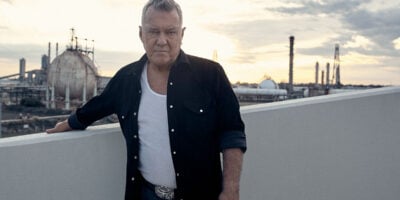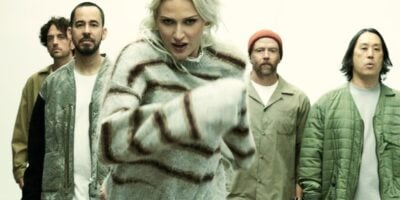The supporting act for this much anticipated Lucky Dragons gig at Melbourne’s Toff in Town is a somewhat unassuming Geoffrey O’Connor. The Melburnian solo artist is fresh off a plane from Los Angeles and tentative about the instruments and various sampling equipment that surround him. He informs a small assembly of gig-goers that he’s had to borrow them all.
He does seem jet lagged but there’s a calm, sleepiness about him and his music that starts the show off earnestly. His sound is reminiscent of Boy George’s mid-80s efforts, but stripped down to its barest rhythms and guitar melodies. It is dramatic and intriguing, mostly because it’s so rare to see an artist like O’Connor so completely exposed. He waltzes through the sparse crowd, singing softly into his microphone. His act seems effortless, and though he describes himself as ‘soft’ in natural, there is a real rawness to his lyrics, specifically in songs like ‘Whatever Leads Me to You’ and ’Now and Then’, which features a backing vocalist just as subtly shy and honest as O’Connor himself.
The songs somewhat bleed into each other, which assures punters his latest album, ‘Vanity is Forever’ is a purchase worth considering. However, as far as stage shows go, one can’t help but yearn for a bit more variety in his case.
It’s a funny sentence to follow up with an act like Lucky Dragons. Way of Los Angeles, the experimental duo has brought a completely new act to town. As soon as they take stage, both sporting eerily similar haircuts, there is a ferocious noise that leaps out of the speakers on a loud and obtrusive frequency. It is delightful, and sets the mood for what is sure to be an unforgettable aural experience. Not only that, but there sits on the backdrop a white screen striped in black. Its lines sit sturdy before the duo move from their respective Apple computers and position themselves, on their knees, in front of a table.
There is confusion at first as the duo position their hands on a sheet of plastic that sits atop the table and begin to drag it around in all directions. After a few minutes a wave of understanding runs through the crowd. This plastic sheet not only controls what we see on the backdrop, but also what we hear through the pulsating of the speakers, both sharping and fading. Luke Fischbeck is the first to invite audience members onto the stage to partake in this strange activity, and soon Sarah Rara follows suit. The pair leave audiences members, both behind the music making and experiencing, to our own devices, while they contribute their own rhythms, tones and vocal frequencies.
This is sensory experience overload, and as soon as audiences members realise that we can partake in the experience of creating, there is a steady flow of people that go up on stage and those who come back to experience the sounds from another perspective.
This goes on for what feels like a bit too long, but it also goes on long enough to leave us all hypnotised. When the set finishes, the two inform us that this was the first time they’d every tried the technology. They seem meditatively happy with the result. What that technology was, this writer is not certain. What is certain, is that this was original music making at its most elemental – another unique contribution to the duos already prolific discography.
– Cayce Hill
































